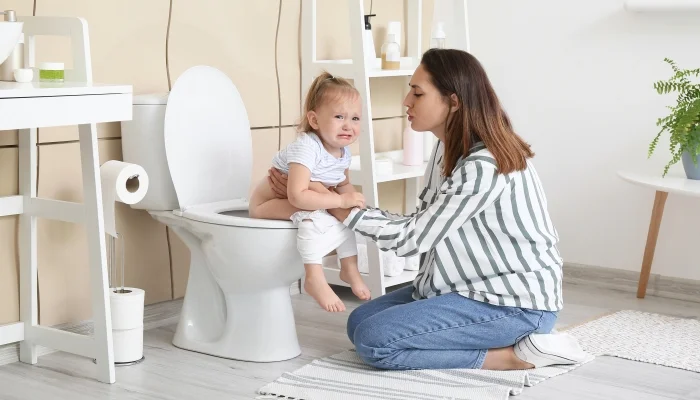Parents of children with Attention Deficit Hyperactivity Disorder (ADHD) may need more patience and creativity to potty train their children. In this guide, parents will receive practical advice, scientific tips and support to assist them in managing ADHD and potty training.
Understanding ADHD and Potty Training
ADHD is a neurological disorder that manifests through continued forgetfulness, high amount of energy and spontaneous actions. The above symptoms hamper the kid’s ability to adapt to new things like using the toilet.
Challenges Involved in Potty Training a Child with ADHD
The following are some unique issues that they need to address when it comes to ADHD and potty training:
| Inattention | Difficulties in concentrating on the activity at hand |
| Hyperactivity | They keep moving around therefore making it problematical for them to sit long enough on a seat and use the toilet |
| Impulsivity | Accidental instances where children act without thinking |
| Sensory Sensitivities | Uncomfortable because of the feeling connected with using toilets. |
Why Traditional Methods May Not Work
Difficulty with Sustained Attention
Potty training is understood as a process that requires children to attend to certain cues from their bodily signals with an intention of making use of the toilet at the right time. One of the factors that affects the ability to control the bladder in children with ADHD is the lack of concentration and attention span which leads to numerous accidents and irregularities.
Hyperactivity Interferes with Sitting Still
ADHD children frequently encounter challenge when it comes to remaining seated for a considerable length of time rendering it difficult to sit on a toilet and perform the task for the required length of time. Strategies used for parents that expect children to sit still are largely doomed.
Challenges with Impulse Control
Another symptom of ADHD particularly among kids is inability to control one’s impulsive tendencies. The consequence of that is the improper use of the bathroom at home or at school because the child has not fully understood that they cannot delay going there as they may put off until the last minute to perform that necessary action.
Inability to Follow Multi-Step Instructions
Furthermore, children who undergo the potty training are required to go step by step (taking off clothes, sitting down, way wiping, flushing, and washing hands) and children with attention deficit hyperactivity disorder may have trouble with these sequential steps. The recommended approaches are characterised by expectations on independence even when it is clear that it will be hard for them.
Sensory Sensitivities
It is common for children diagnosed with ADHD to become more easily affected by stimuli, for example, the roughness of a toilet seat, the sound when a toilet flushes, or even the brightness inside a bathroom. Such sensitivities can result in discomfort, which makes taking conventional measures difficult and impracticable.
Need for Immediate Rewards
Whilst these methods are generally oriented towards long-term rewards such as a sticker after a successful day for a toddler called potty training, it suggests that it is possible for a child with ADHD to be less able to delay gratification. This effect makes long-term incentive systems rather ineffective in this case because a child with this disorder cannot allow the reward to have a taper.
7 Proven Strategies to Help with ADHD and potty training
Consider these seven strategies for children with ADHD and potty training can be made more successful.
Establish a Routine
Children with ADHD need a routine that is predictable as they thrive on predictability. Make sure you establish an unchanging bladder schedule which makes it easier for your child to use the toilet at the same time each day. This will help them build a habit and reduce accidents.
Steps to Establishing a Routine:
| Determine specific bathroom break times such as after meals or before going to bed |
| Use pictures, diagrams and charts to remind your kid when they have to go. |
| Reinforce regime by rewarding constancy in doing so. |
Use Positive Reinforcement
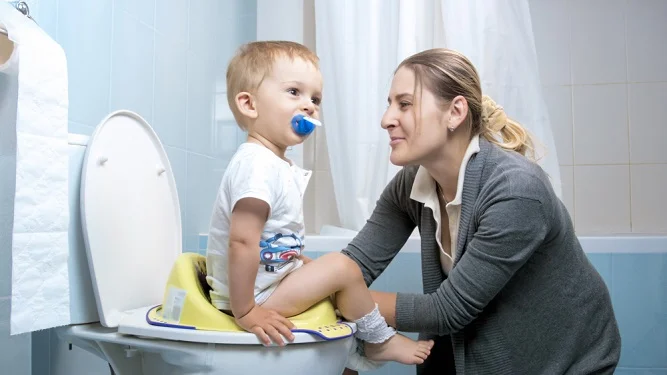
Positive reinforcement is one of potty training’s most effective tools in this case. Celebrate all achievements even small ones because it will encourage your child.
There are several types of positive reinforcements
| Verbal Praise | Congratulate your child if he/she uses the toilet properly |
| Chart & Stickers | Create a chart where progress can be tracked using stickers |
| Tiny Rewards | Provide some goodies or privileges as soon as you reach any milestone. |
Steps to Break Down the Process:
The potty training process can be broken down into simple, manageable steps for children with ADHD.
| Recognize the Need | Help your child understand how it feels like when one is about to urinate or defecate. |
| Go to the Bathroom | Direct them into going to the toilet whenever they feel like using it. |
| Undress | Train them on how they can undress quickly and effortlessly. |
| Use the Toilet | Encourage her/him to sit until she/he finishes that specific action before letting her/him stand up. |
| Wipe and Redress | If necessary, support in wiping and dressing again |
| Wash Hands | Make sure you have been taught a lesson on washing hands after every contact with anything dirty or unclean in order to maintain good hygiene practices. |
Minimize Distractions
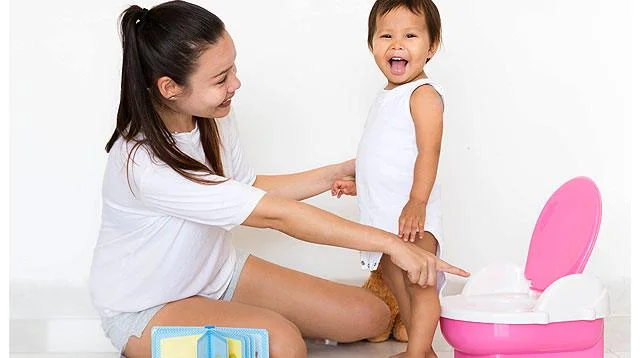
This will help your child focus on potty training by establishing a calm and distraction-free bathroom environment.
Tips to Minimize Distractions:
| Toys and electronics should not be in the bathroom |
| The use of soft colors, as well as wall hangings |
| Ensure a quiet bathroom free from noise pollution |
Be Patient and Consistent
That is why patience and consistency matter most. It doesn’t matter if there are some times when you move two steps forward only to retreat three, that’s part of learning anyway.
Patience and Consistency Tips
| Avoid yelling even during accidents |
| Follow through with regular routines & reinforcements every time without failure |
| Don’t punish for accidents but rather encourage and support |
Use Visual and Auditory Aids
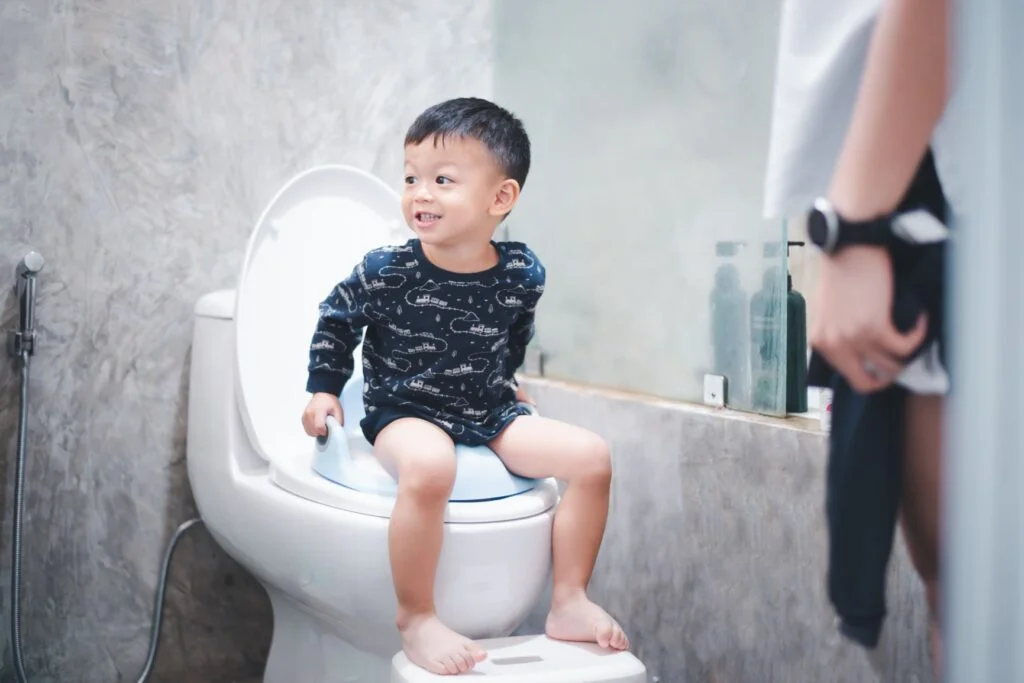
Such things as visual and auditory aids can help in solidifying the process of ADHD and potty training while maintaining your child’s interest.
Aids Examples:
| Visual Schedules | These should consist of the steps written down in charts and drawings |
| Songs and Rhymes | You could even come up with a song that will make the toilet training fun |
| Timers | For instance, there should be a timer set to prompt a child about his/her planned toilet breaks throughout the day. |
Seek Professional Support
Should you find difficulties potty training a child with ADHD, it is always advisable to seek assistance from professionals like pediatricians, therapists or ADHD specialists.
When to Seek Help
| Persistent difficulties despite following strategies, |
| Signs of severe anxiety or behavioral issues related to potty training, |
| Need for personalized advice and support. |
Additional Tips for Successful Potty Training
Potty training Alarm
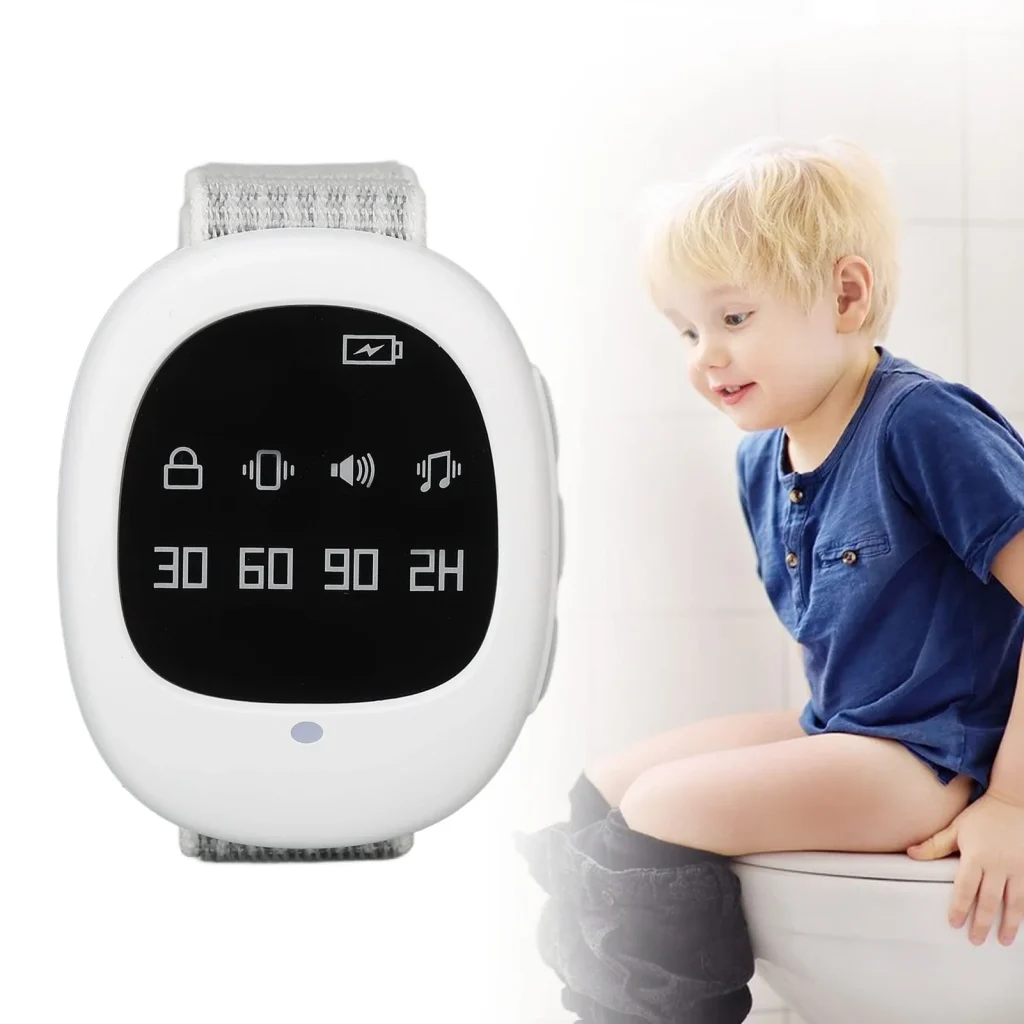
A potty training alarm is a priceless tool for parents in the difficult but necessary stage of toilet training their baby. This novel gadget is designed to help sense when a child needs to use the bathroom thus alerting them early enough to prevent accidents.
The alarm usually attaches onto the kid’s clothing and feels moisture, making a gentle sound or vibrating so that one knows when it’s time to go. In turn, this helps build routines as well as reinforce connecting what makes one go with toileting process.
By consistently using a potty training alarm, parents can make the process more manageable and less stressful, promoting quicker learning and greater confidence in their child’s ability to stay dry.
Creating a Supportive Environment
In children with ADHD, providing an environment that is supportive goes a long way in improving their experience during this time when they are being potty trained.
Tips for a Supportive Environment
| Family Involvement | Ensure all caregivers follow the same routine and strategies. |
| Peer Modeling | Encourage your child to learn from siblings or peers who are already potty trained. |
| Comfort Items | Allow your child to bring a favorite toy or book to the bathroom for comfort. |
Monitoring Progress
One of the ways to get your child still interested in training process is by monitoring and celebrating their progress regularly.
Monitoring Tips:
| Keep a record book for potty training to follow success and setbacks rates. |
| Adapt methods according to how far your child has progressed and responded. |
| Fete milestones like staying without wetting oneself over a longer duration. |
Dealing with Accidents
In accordance with ADHD, accidents are just a normal part of the potty training.
Handling Accidents:
| Stay steady and encouraging. |
| Turn accidents into learning opportunities. |
| Reinforce the routine as well as positive actions. |
Conclusion
When it comes to potty-training children with attention deficit hyperactivity disorder (ADHD), this calls for adaptation, patience, and consistency. Parents can successfully overcome this important developmental stage by instituting routines, using rewards to motivate good behavior, breaking tasks into smaller parts and getting professional help whenever they need it. Every child is different so celebrate each milestone they achieve along the way as progress may not always be linear.
FAQs about ADHD and Potty Training
Q1: What age should I start toilet training my child who has ADHD?
A1: Potty Traning readiness varies. Look for readiness cues like showing interest in the toilet, staying dry for longer periods, or be able to follow simple instructions. Usually, children suffering from ADHD may begin later than others in their group.
Q2: What if my child is afraid of the toilet?
A2: Fear of the toilet is an occurrence that is known to be common among many children, and as a result, it’s often necessary to use a child-friendly potty seat for them. In addition, their parents need to constantly encourage them and introduce them step by step so that they can get used to going to the bathroom and even become comfortable with it.
Q3: How do I handle resistance to using the toilet?
A3: One has only got to identify what causes this resistance which could be fear, being uncomfortable or simply defiance. This includes lots of patience because the most important thing is addressing the root cause systematically through different ways including rewards and making sure that this becomes a nice enjoyable time spent in the bathroom at home.
Q4: Should I use pull-ups or training pants?
A4: During early months of potty training especially when you are out for shopping or sleep time you can make use of pull-ups or training pants but once your child becomes consistent in using this facility slowly change back into normal underpants.
Q5: Can medication for ADHD affect potty training?
A5: Some drugs may interfere with bladder control ability. Therefore, parents should closely monitor their children’s urinary habits after starting treatment.

Russell F. Jones, holding a Master in psychology from the University of Florida. He writes for Smart Parent Solutions, offering practical advice on parenting and child development. His engaging content helps parents navigate family life with confidence and ease. Russell enjoys sharing his knowledge and spending quality time with his family.
